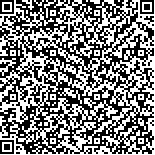| 本文已被:浏览 1310次 下载 763次 |

码上扫一扫! |
|
|
| 西藏牦牛牛支原体的分离鉴定及其生长特性、耐药性分析 |
|
王冬经1,2,徐业芬1,2,索朗斯珠1,2,严明帅1,2,赵霞玲1,2,朱勇3,牛家强1,2*
|
|
1. 西藏农牧学院 动物科学学院, 西藏 林芝 860000;2.西藏农牧学院 西藏高原动物疫病研究自治区高校重点实验室, 西藏 林芝 860000;3.西藏农牧科学院 畜牧兽医研究所, 拉萨 850000
|
|
| 摘要: |
| 为确定引起西藏牦牛常发多发肺炎的细菌病原体,采集145份西藏牦牛鼻腔粘液,通过病原分离培养、菌落形态观察、生化试验和PCR鉴定等方法进行细菌检测;通过OD630和pH变化对分离株进行生长曲线测定;采用K-B纸片法进行药物敏感性试验。结果显示:从145份牦牛鼻腔粘液中分离得到10株牛支原体;分离株菌落形态和生化试验结果均符合牛支原体的生物学特性;通过PCR分别扩增得到238 bp的uvrC特异性基因与1 500 bp 16S rRNA基因。10株分离株间的uvrC特异性基因和16S rRNA基因序列同源性较高,均与国际标准株PG45有高度同源性,uvrC特异性基因序列和16S rRNA基因序列与国际标准株PG45的同源性分别为98.4%~100%和99.1%~99.9%。生长曲线测定表明,分离株在PPLO培养基中培养24 h内为迟缓期,培养42 h后开始进入稳定期,78 h后开始进入衰亡期;3个分离株培养物的平均pH随着培养时间延长不断降低,其中24~42 h期间pH下降最快,随后下降速度减慢,至78 h后几乎不再变化。药物敏感性试验表明,分离株对大环内酯类、氨基糖苷类和林可胺类等药物均存在不同程度的耐药,但对强力霉素和卡那霉素敏感或中度敏感。 |
| 关键词: 西藏牦牛 牛支原体 分离鉴定 生长曲线 耐药性 |
| DOI:10.11841/j.issn.1007-4333.2020.12.08 |
| 分类号: |
| 基金项目:国家肉牛牦牛产业体系(CARS-37);西藏特色家畜选育与健康养殖专项(XZ201801 NA03);厅校联合基金(XZ2018ZRG-15);西藏农牧学院研究生创新计划(YJS2018-07) |
|
| Isolation, identification, growth characteristics and drug resistance analysis of Mycoplasma bovis from Tibetan yak |
|
WANG Dongjing1,2,XU Yefen1,2,SUO Langsizhu1,2,YAN Mingshuai1,2,ZHAO Xialing1,2,ZHU Yong3,NIU Jiaqiang1,2*
|
|
1.Animal Science College, Tibet Agriculture & Animal Husbandry University, Nyingchi 860000, China;2.Provincial Key Laboratory of Tibet Plateau Animal Epidemic Disease Research, Nyingchi 860000, China;3.Animal husbandry and Veterinary Research Institute, Tibetan Academy of Agricultural Sciences, Lhasa 850000, China
|
| Abstract: |
| In order to clarify the bacterial pathogens causing frequent pneumonia in Tibetan yak, 145 nasal mucus of Tibetan yak were collected. Bacteriological determination was carried out through pathogen isolation and culture, colony morphology observation, biochemical test, and PCR detection. The growth curve of the isolate strain was determined by the change of optical density OD630 and pH, and K-B disk method was used for antimicrobial susceptibility test. The results showed that ten strains of Mycoplasma bovis in total were isolated from 145 yak nasal mucus; The results of colony morphology and biochemical test were consistent with the biological characters of Mycoplasma bovis. One 238 bp target fragment corresponding to the uvrC specific gene and one 1 500 bp target fragment corresponding to the 16S rRNA gene were amplified by PCR. The nucleotide sequences of uvrC specific gene and 16S rRNA gene among the 10 isolates were highly homologous, and the homology between uvrC specific gene and the international standard strain PG45 was 98. 4%-100% and the homology between 16S rRNA gene and PG45 was 99. 1%-99. 9%. The growth curve assay showed that the isolates cultured in PPLO medium were in lag phase for 24 h, entered stable period in 42 hours, and entered decline phase 78 hours later. In addition, the pH of the three isolates decreased with the prolongation of the culture time. The pH decreased the most rapidly during the period of 24-42 h, then decreased slowly and almost stayed unchanged after 78 h. The antimicrobial susceptibility analysis showed that the isolates were resistant to macrolides, aminoglycosides and lincomycin at various degrees, but they were sensitive or moderately sensitive to doxycycline and kanamycin. |
| Key words: Tibetan yak Mycoplasma bovis isolation and identification growth curve antimicrobial susceptibility |